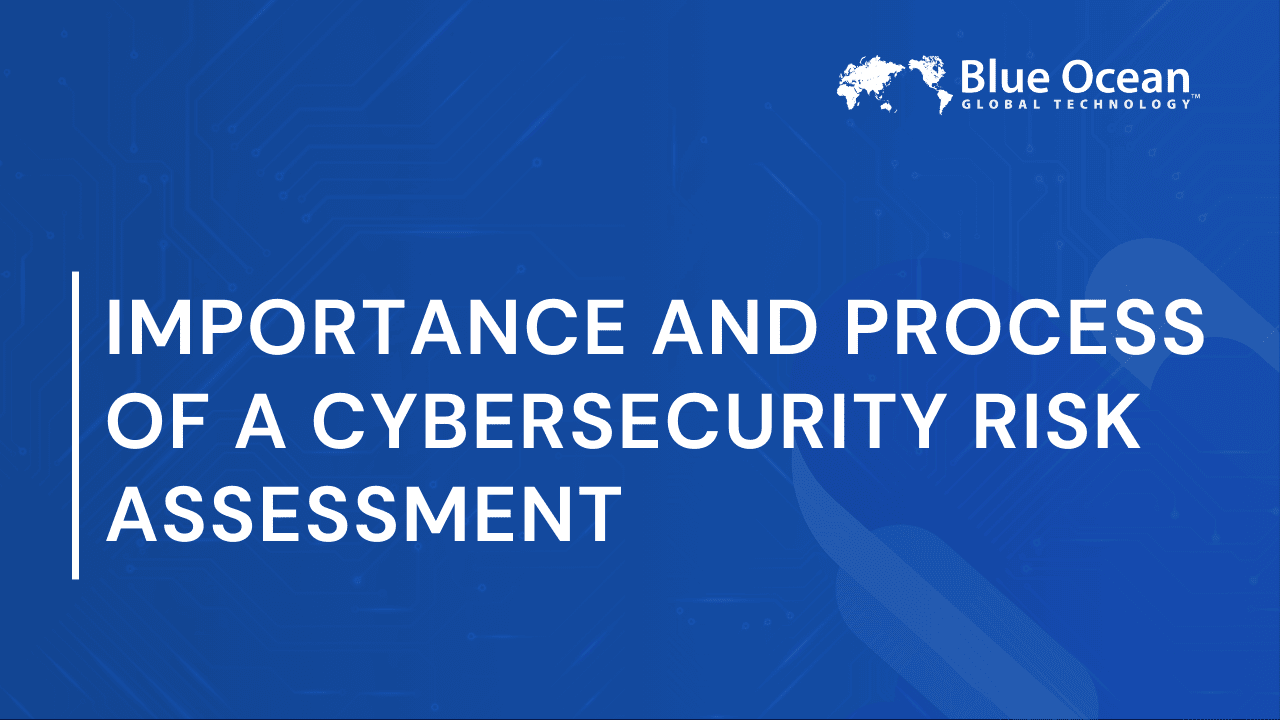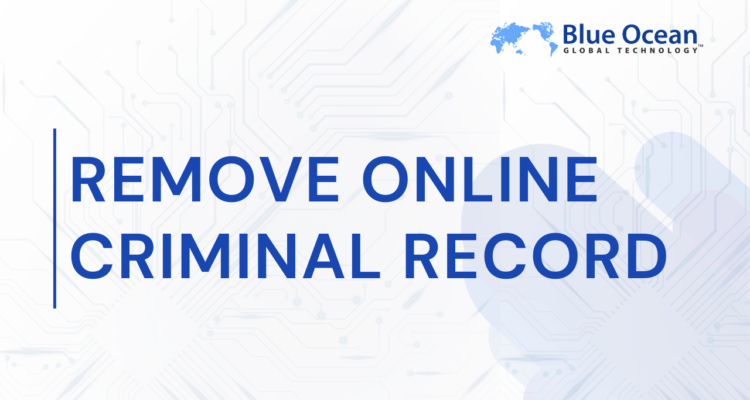Overview:
- In today’s digital landscape, organizations are targeted by cyber attacks all the time
- Cybersecurity risk assessment can provide protection and security by identifying and mitigating risks and vulnerabilities
- Failing to perform a cybersecurity assessment can cause severe damage to an organization
Understanding Cybersecurity Risk and Assessment
Cybersecurity involves the implementation of strategies, technologies, and practices for protection against digital attacks. These attacks are often directed at sensitive information to extort money from users. Effective application of cybersecurity measures such as authentication, authorization, risk management, and establishing multiple layers of protection ensures that your data remains confidential and protected against potential threats.
Importance of Cybersecurity:
- Protecting Sensitive Information: In the age of digital transformation, your classified information becomes more prone to the evolving technological threats. Making your proprietary details inaccessible to unauthorized entities is one of the core competencies of cybersecurity.
- Emerging Technology: Cybersecurity implements innovative technology to procure a secure and encrypted environment for business advancements. A cybersecurity framework encompasses a conductive ground for the development of new technologies and economic growth.
- Rise in Cyber Threats: The increasing trend of cyber crimes reveals that cybersecurity is becoming more a necessity than a luxury for small and big businesses. Moreover, prime businesses in federal contracting require cybersecurity for protection against national security threats like cyber warfare, espionage, and terrorism.
- Prevents Data Breaches: Cybersecurity threats such as data breaches, identity thefts, reputational damage, and legal consequences can have a crippling impact on organizations. Measures such as malware detection, maintaining regulatory compliance, and risk assessment make cybersecurity invaluable for all growing businesses.
Source : Freepik
It is the process of identifying, analyzing, and evaluating cybersecurity risks within an organization’s information technology environment. This allows an organization to take targeted, effective actions to mitigate these risks and enhance overall security.
Why Do You Need a Cybersecurity Assessment?
Most businesses rely on connected devices, which are all conduits for possible cyber attacks. E-mails are the most common method of communication in companies, yet they are the most common malware vector. In 2024 alone, ninety-four percent of organizations reported incidents surrounding email security. Here are some key reasons why cybersecurity and risk assessment are crucial for maintaining a secure digital environment:
- Ensures A Secure Virtual Workspace: Risk Assessment and Cybersecurity are vital for maintaining a safe digital environment. Risk assessments neutralizes cyber incidents and ensures business continuity.
- Mitigating Vulnerabilities: In cybersecurity, the protocol of risk assessment identifies the threats and problems within cyberspace. By evaluating potential cracks and weaknesses, businesses can prevent cyber losses.
-
-
- Need for Cybersecurity Investments: Since it is quite easy for digital attacks to threaten a business’s operations, risk assessment emphasizes the need to prioritize investments in cybersecurity.
- Establishing Strategies: Risk assessment is essential for designing a well-rounded cybersecurity plan for organizations. These plans may include updating security protocols, revising policies, and improving defenses.
- Encourages Cyber Hygiene: Risk assessment protocol always stays on alert and protects the company’s information from being compromised. Risk assessment strengthens a company’s defenses by enhancing the internal and external cyber hygiene.
Cyber extortion is a rising cybercrime that demands businesses to prioritize cybersecurity by taking proactive measures. Conducting a cybersecurity assessment helps avoid data breaches and security incidents that may critically affect operations, assets, and people.
Implications of Failing to Perform a Cybersecurity Risk Assessment
When an organization fails to conduct a cybersecurity assessment, it can have serious impacts. The implications include disruptions to financial stability, legal consequences, and reputation damage.
However, these challenges can be addressed effectively through cyber investigations.
Financial and Legal Implications
The financial impact of a cyber attack could be severe. Repairing systems and recovering data is often very expensive. Associated legal fees and regulatory fines can add to the burden. IBM reported that the global average cost of data breaches reached $4.88 million in 2024.
Furthermore, lawsuits stemming from compromised personal information can erode customer trust, inflicting further reputational damage. The financial burden can be so overwhelming that some businesses may not survive a major data breach.
Workplace Productivity Implications
Cyber attacks also disrupt day-to-day activities, causing workers to shift focus toward resolving security problems instead of focusing on work. Low productivity by staff can translate into client dissatisfaction that may lead to lost business.
The Process of Conducting a Cybersecurity Risk Assessment
Generally, it involves five critical steps.
Define the Scope of the Risk Assessment
Clearly defining the scope is the initial step. The scope can be the entire organization, one department, or a particular business process.
All the participants involved should be familiar with the related terminology. The International Organization for Standardization (ISO) provides guidance, outlining the key concepts and terms related to cybersecurity.
Identify Potential Risks
Next, you will want to do an inventory of all of the assets in scope. This gives an idea of what needs to be protected. You can then research each asset for potential threats that might affect the organization’s information systems and data. Regularly monitoring active devices such as servers, routers, and workstations helps identify potential entry points for attackers or any misconfigurations within the network. Having a cybersecurity professional manage your organization’s data security significantly reduces the chances of falling victim to digital attacks.
Conduct a Comprehensive Risk Assessment
These refer to audits and organized strategies that identify, assess, and calculate the probability of risk. Audits are also helpful in implementing advanced security measures. This involves using thread modeling and vulnerability scanning tools to identify the likelihood of occurrence of the risk and the impact on the organization. The analysis of the likelihood of an attack is based on:
- Discoverability: how recognized the vulnerability is
- Exploitability: how easily an attacker can exploit a vulnerability
- Reproducibility of threats and vulnerabilities: the capacity of criminals to utilize the same attack methods or take advantage of the same vulnerability
Source : Freepik
Impact refers to the degree of damage an organization may experience as a result of a threat. This aspect of the assessment is inherently subjective, making input from stakeholders and security experts essential.
The main focus of these tools is to assess the risk level before a system gets deployed. Consider the likelihood and impact of each risk, recognize weak mechanisms, and grade their severity on a scale of low, medium, and high. In doing so, you will be able to create a risk matrix and identify mitigation strategies.
Implement Mitigation and Control Strategies
After prioritizing the potential risks, the organization can address them. The next step revolves around scaling the potential risks according to the likelihood and developing strategies for the greatest threats. Key steps to mitigating and controlling these risks include:
- Risk Avoidance:
Taking preventative measures and avoiding activities that pose significant risks to cybersecurity.
This involves a revision of all the operational practices to reduce the risk or impact of cyber threats. - Risk Reduction
Implement Preventative Controls: Put in place security measures like firewalls, intrusion detection systems, and access controls to act as barriers between trusted internal networks and foreign external networks.
Employee Training: Educate employees on security best practices, such as strong password hygiene, social engineering tactics, and phishing awareness.
Regular Security Audits: Conduct regular security audits to identify and address vulnerabilities. This measure ensures swiftness in analyzing data from various networks to evaluate potential anomalies and faster response measures for mitigation.
Business Continuity Planning: Develop and test plans for business continuity in case of disruptions. This includes creating structured outlines for identifying, containing, and eliminating threats. - Risk Transfer:
Insurance: Purchase insurance policies to cover potential losses. This acts as a safety blanket for your organization should things go wrong.
Outsourcing: Outsourcing high-risk activities to reliable third-party providers would ensure that there’s no chances of risk accumulation and that could result in a larger destructive impact. - Risk Acceptance
Strategize Risk Management: If the risks have low impact or a lesser likelihood of happening, then it may be wiser to run your operations with risk rather than not evolving at all.
Risk Surveillance: Constantly monitoring existing and potential risks makes certain of its low probability and impact.
Additional Efforts: Integrating risk assessment to identify new threats and prioritize mitigation efforts.
Monitor and Review Assessment Results
The last step is producing a report detailing all the vulnerabilities within the environment and outlining mitigation strategies. This report is essential for future assessments, as it can minimize the risk of cyber attacks. It aids in identifying new threats as soon as they appear, and serves as a template for subsequent evaluations.
Since an organization’s needs can change over time, continuous monitoring and effective response are vital to ensuring risks are effectively managed.
Avoid Regulatory Penalties.
Conduct regular cybersecurity risk assessments to protect your organization and avoid costly regulatory penalties.
Common Risks Identified in Assessments
Cybersecurity assessments typically highlight several key threats, including data breaches, insider vulnerabilities, malware, and phishing attacks.
Data Breaches
Data breaches often cause the most damage to organizations, as they can lead to financial and reputational harm. Organizations should review their data security measures, including encryption protocols, and improve them.
Insider Threats
Cyber attacks may originate within the company. An assessment should evaluate whether an insider threat was intentional—caused by an employee—or simply a human error.
Malware and Ransomware Attacks
Malware refers to malicious software designed to infiltrate IT systems, and ransomware is a type of malware that encrypts the sensitive data and demands ransom payment for its restoration. They often have the intent to steal sensitive data, disrupt services, or cause damage to network infrastructure.
Phishing Attacks
Phishing is an online scan enticing users to share their private information using misleading tactics. Cybercriminals aim to install malware or gain the individual’s credentials.
Source : Freepik
Supply Chain Attacks:
To hamper the business operations of a primary business, supply chain attacks tamper with the products or services provided by the small businesses that the primary businesses subcontracts with.
Distributed Denial of Service (DDOS) Attacks:
DDOS are enhanced attacks that aim at overloading a computer system. Their target is to degrade system functionality and performance.
Cybersecurity Best Practices
- Annual Risk Assessment: Regular checks enable a secured cyberspace for an organization and result in smooth business operations.
- Employee Training and Awareness: Cybersecurity awareness seminars help the employees make wise decisions and keep in touch with latest developments in risk assessment.
- Strong Password Policies: Reinforce the use of strong and complex passwords for safekeeping confidential information. Encourage the use of password managers as an organized repository.
- Network Security: Stress the importance of using firewalls and anti-malware tools to avoid comprising your local network’s security.
- Endpoint Security: Educate your employees on keeping company devices like smartphones and laptops up to date. Mandate the installation of antivirus software and automatic system updates.
- Data Encryption and Protection: By encrypting sensitive data into a coded format, businesses can safeguard their information between shared networks. Encryption programs offer a personalized decryption key to make sure that it doesn’t fall in the wrong hands.
- Multi-Factor Authentication (MFA): Enable multi-factor authentication for all the critical applications of your organization’s systems. MFA is a way of safeguarding a company’s resources against financial loss, intellectual property theft, and reputation damages.
- Regular Software Updates and Patching: Don’t get complacent and allow the digital attackers to catch up with you. Keep updating all your team’s softwares to avoid phishing.
- Incident Response Planning: For a faster response and risk mitigation, these plans provide outlines for assessing, maintaining, and reducing threats. Incident response plans offer a structured approach to cybersecurity and risk assessment measures.
- Vendor Risk Assessments: Before subcontracting your essential tasks to third parties, examine their security policies and compliance with relevant regulations.
- Cloud Security: To reduce the chances of losing critical information because of malware or cyber attacks, organizations should regularly back up their data through cloud security. Backing up data on cloud security is a method of restoring primary data in case of accidental deletion, thus ensuring business continuity.
Conclusion
Only through an in-depth cybersecurity risk assessment can organizations truly protect their assets and maintain trust in today’s digital world. Such an assessment is instrumental in providing insight that may inform strategic decisions and enhance the overall security posture. Not taking this process seriously can have grave consequences, including data breaches, financial ruin, and reputational damage. By systematically identifying and evaluating risks, organizations can recognize common cyber risks and prioritize defenses accordingly. Periodic assessments are a proactive investment and an essential component of a resilient cybersecurity strategy for ensuring long-term organizational success.
Frequently Asked Questions
1. How frequently should a cybersecurity risk assessment be conducted?
It is an ongoing process that must be conducted regularly. Today’s big data era has fostered an ever-changing landscape of cyber threats and activities. Thus, it should not be viewed as a one-off event. To stay protected, it is recommended to conduct a thorough assessment at least every two years.
2. Who conducts a cybersecurity risk assessment?
It is typically conducted by experts in cybersecurity, risk management, and IT systems.
3. How can I report a cyber incident?
You can report it to federal agencies, including the Cybersecurity and Infrastructure Security Agency (CISA) and the FBI. You can also report it to local law enforcement and regulatory agencies.
Do Not Let Data Breaches Tarnish Your Business Reputation.
Safeguard your online reputation with our team of professionals— here to help you every step of the way!
















